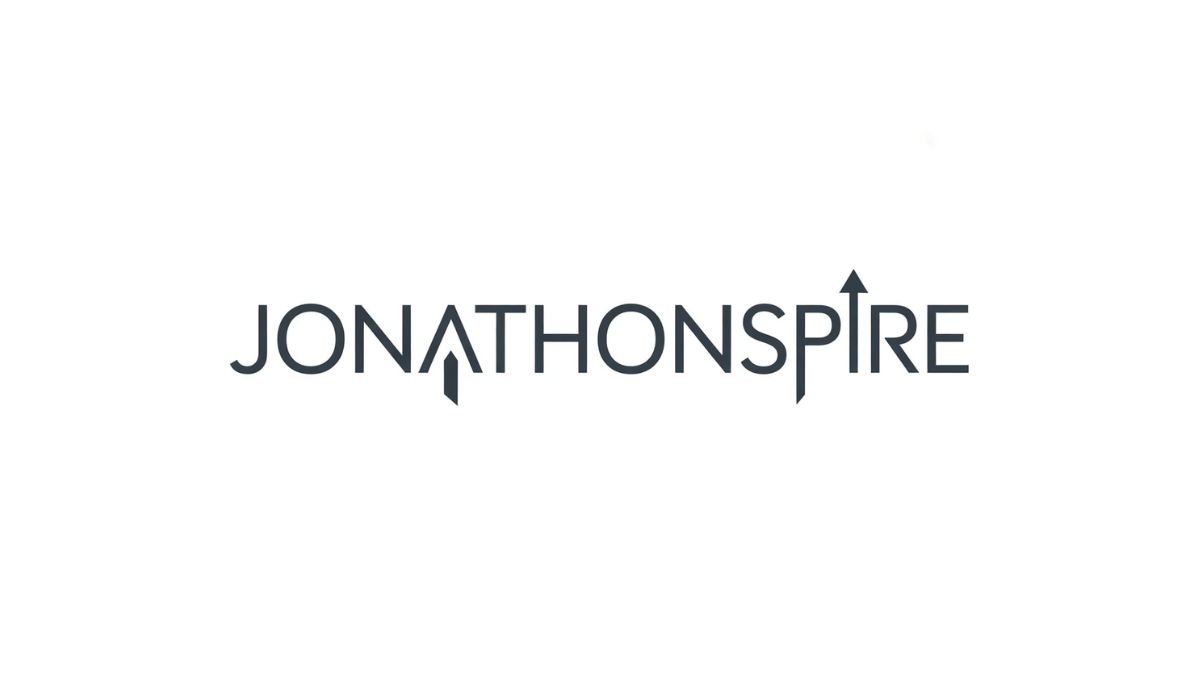TECHNOLOGY
Granular Recovery Technology: Revolutionizing Data Protection

In today’s data-driven world, granular recovery technology stands out as a powerful solution that enhances how businesses protect, manage, and restore their critical information. With the increasing complexity of IT environments and growing cyber threats, organizations are shifting towards more advanced, flexible, and targeted recovery methods. This technology allows precise data restoration, eliminating the need to recover entire systems just to retrieve a single file or email. It’s efficient, cost-effective, and indispensable for modern digital infrastructures.
What Is Granular Recovery Technology?
Granular recovery technology is a method that enables selective retrieval of individual data components—such as files, emails, or database records—from backup data without having to restore the full system or backup image. This technology is particularly beneficial in minimizing downtime, reducing recovery times, and enhancing overall business continuity strategies.
Unlike traditional recovery methods that require extensive time and resources, granular recovery offers quick and targeted solutions. It has become essential for businesses managing large-scale operations, where data loss—even if minimal—can lead to significant disruptions.
The Evolution of Backup and Recovery
From Full Backups to Granular Solutions
Historically, data recovery involved full system backups stored on tapes or disks. These backups were slow to create and even slower to restore. Organizations had to wait hours—or even days—to retrieve critical data.
As digital ecosystems expanded, the need for more flexible and agile solutions emerged. Granular recovery technology responded to this demand, offering precision without the overhead of restoring complete backup environments.
Modern Integration with Virtual and Cloud Systems
Today’s IT environments are hybrid, involving on-premise servers, cloud platforms, and virtual machines. Granular recovery technology integrates seamlessly across these ecosystems, ensuring that individual files or records can be restored no matter where the data resides.
It supports a wide range of platforms, including popular systems like Microsoft Exchange, SQL databases, SharePoint, virtual environments like VMware and Hyper-V, and numerous cloud storage solutions. This flexibility has made granular recovery the go-to method for modern enterprises.
Key Benefits of Granular Recovery Technology
Faster Recovery Times
By allowing users to recover only the specific data they need, granular recovery drastically reduces restoration times. Businesses can minimize operational disruption and resume normal functions quickly after incidents.
Improved Data Management
Granular recovery enables better control and visibility into backup data. IT teams can browse, search, and extract specific items without combing through massive backup archives.
Cost Efficiency
Organizations save resources by avoiding full system restores, which often require additional hardware, software, and human effort. Targeted recovery ensures optimal use of existing infrastructure.
Enhanced Compliance and Auditing
With increasing regulatory demands, businesses must produce specific data upon request. Granular recovery simplifies this process, allowing for fast, accurate, and verifiable data retrieval for audits or legal inquiries.
Flexibility Across Environments
Whether operating in virtual, physical, or cloud-based infrastructures, granular recovery technology adapts seamlessly, making it a universally compatible solution.
How Granular Recovery Works
Granular recovery technology relies on indexing and metadata tracking during the backup process. When a backup is created, each data component—such as an email message or a document—is tagged and cataloged.
During recovery, users can search this index and restore only the items they need. This search-and-restore functionality significantly reduces the time and storage required for recovery.
Modern tools use intuitive dashboards that allow administrators to drill down into backup snapshots, preview content, and restore selected items in just a few clicks.
Comparison Table: Granular Recovery Technology vs. Traditional Recovery
| Feature | Granular Recovery Technology | Traditional Recovery |
| Cost | Lower operational costs | Higher resource usage |
| Efficiency | Rapid, item-level recovery | Full-system recovery takes time |
| Ease of Use | User-friendly, searchable | Often requires technical expertise |
| Scalability | Scales across hybrid environments | Limited flexibility |
| Benefits | Enhanced compliance, minimal downtime | Suitable for large restores but time-consuming |
Use Cases in Various Industries
Healthcare
Hospitals and clinics depend on real-time access to patient records. Granular recovery allows them to retrieve a specific report or image without affecting the broader health information system.
Finance
Banks use granular recovery to meet regulatory standards and retrieve transactional records or emails for auditing purposes—without disrupting customer service operations.
Education
Schools and universities often manage large email servers and document repositories. This technology enables IT staff to quickly recover lost assignments or communications.
Retail and E-commerce
Retailers can restore customer orders or database entries without halting their sales platforms. This ensures minimal impact on revenue and customer experience.
Why Businesses Are Adopting Granular Recovery Technology
The shift towards granular recovery technology is more than just a trend—it’s a strategic response to modern data challenges. The ability to restore critical information without delays provides a competitive edge and operational resilience.
Additionally, as cyber threats like ransomware become more sophisticated, businesses need to be prepared with technologies that support quick containment and recovery. Granular recovery helps isolate and restore only clean, unaffected data, reducing the scope of damage.
Expert Insights and Industry Practices
IT experts emphasize the importance of incorporating granular recovery into broader disaster recovery and business continuity plans. According to industry practices, combining incremental backups with item-level recovery allows for maximum data protection while minimizing storage use.
Organizations are also advised to test recovery procedures regularly. Granular recovery solutions often include testing modes where specific items can be recovered in a sandbox environment before being restored to production.
Challenges and Considerations
Compatibility and Integration
Not all backup solutions support granular recovery for every system. Businesses should verify compatibility with their existing infrastructure and ensure the solution can handle all relevant data formats and platforms.
Training and Implementation
While the technology is user-friendly, initial training is crucial. Teams must understand how to navigate recovery interfaces and apply best practices for indexing and storage optimization.
Storage Management
Granular backups may require more metadata tracking, which could slightly increase storage needs. However, this is offset by the reduced need for full backups.
Future of Granular Recovery Technology
The future of granular recovery technology is promising, with ongoing innovations enhancing its accuracy, speed, and usability. AI-driven indexing, automated anomaly detection, and predictive recovery suggestions are emerging features.
Additionally, with edge computing and IoT generating vast amounts of distributed data, the need for localized, item-level recovery will only grow. Businesses that invest in advanced recovery tools now will be better positioned to handle the data challenges of tomorrow.
Best Practices for Implementing Granular Recovery
- Conduct a thorough assessment of current backup systems and identify pain points in recovery.
- Choose a solution that integrates with your existing infrastructure and supports all critical data types.
- Train IT staff on using granular recovery tools and interpreting metadata.
- Schedule regular tests of recovery scenarios to ensure effectiveness.
- Monitor performance and update configurations based on usage trends.
Conclusion
Granular recovery technology is transforming how organizations manage data protection, compliance, and restoration. By allowing selective, efficient recovery of individual data elements, it minimizes downtime, reduces operational costs, and enhances regulatory preparedness. As digital ecosystems become more complex and vulnerable, granular recovery offers a smart, scalable, and future-ready solution.
FAQs
What makes granular recovery technology different from traditional backups?
Granular recovery allows for restoring individual files or records without needing to recover the entire system, unlike traditional methods that require full data restoration.
Is granular recovery technology suitable for small businesses?
Yes, small businesses benefit significantly from faster recovery times, lower costs, and improved data accessibility offered by granular recovery systems.
Can granular recovery be used with cloud-based platforms?
Absolutely. Many solutions support hybrid environments, including cloud services, ensuring seamless recovery across diverse infrastructures.
Does granular recovery technology affect storage space?
While it adds some metadata, the storage impact is minimal and offset by the reduced need for full backups and the efficiency of item-level restores.
How secure is granular recovery?
Security depends on the provider and configuration. Most modern solutions include encryption, access controls, and auditing features to maintain data integrity during recovery.
Is training necessary to use granular recovery systems?
Basic training is recommended to ensure users can navigate interfaces, perform searches, and implement recovery correctly. However, many tools are designed to be intuitive and user-friendly.
TECHNOLOGY
Who Is Jonathonspire? A Deep Dive into a Modern Digital Voice

In today’s fast-evolving digital landscape, creators come and go—but only a select few manage to leave a lasting impression through authenticity, consistency, and vision. One such emerging figure is jonathonspire, a name increasingly associated with thoughtful commentary, creative storytelling, and meaningful online engagement. Though not yet a household name, jonathonspire is steadily building a reputation as a voice worth listening to—especially among audiences seeking depth, originality, and substance in an era often dominated by fleeting trends.
This article offers a detailed and informative look into who jonathonspire is, what drives his work, the platforms he’s most active on, the themes he explores, and why his approach to digital creation stands out. Whether you’re a long-time follower or just discovering this creator for the first time, this guide will help you understand both the public persona and the philosophy behind the name.
Introduction: The Rise of a Purpose-Driven Creator
The internet has democratized influence—anyone with a device and a message can share their voice with the world. But influence without intention rarely endures. Jonathonspire exemplifies the new wave of digital creators who prioritize purpose over virality. His content doesn’t chase algorithmic favor through shock or sensationalism; instead, it invites reflection, encourages learning, and fosters dialogue.
What makes jonathonspire distinctive is not just what he shares—but how and why. His online presence reflects a deliberate effort to build bridges between ideas: between technology and humanity, between creativity and critical thinking, between individual experience and collective understanding. This holistic vision is evident across his essays, videos, social posts, and community interactions.
Unlike many influencer profiles built around aesthetics or lifestyle curation, jonathonspire focuses on substance: examining modern dilemmas, unpacking cultural shifts, and asking questions that linger long after the screen is turned off. In doing so, he joins a growing cohort of creators redefining what it means to be “influential” in the 21st century—not through follower counts alone, but through resonance and relevance.
Origins and Background: Behind the Username
The name jonathonspire is a constructed blend—part personal identity, part symbolic meaning. While the first part, Jonathon, reflects a real-world identity, the suffix -spire carries rich connotations: to aspire, to reach upward; a spire as in the towering architectural feature pointing toward the sky; and even echoes of inspire. Together, jonathonspire signals intention—a commitment to growth, elevation, and motivation.
Though few personal details are publicly shared (by choice, not oversight), available clues suggest a background rooted in interdisciplinary learning. Traces of philosophy, cognitive science, design thinking, and digital literacy appear repeatedly in his work—hinting at formal or self-directed study across fields. There’s a strong emphasis on systems thinking: how individual behaviors aggregate into societal patterns, how small habits shape long-term outcomes, and how digital environments mold perception.
This intellectual foundation doesn’t manifest as jargon-laden lectures. Instead, jonathonspire excels at distillation—taking complex topics and making them accessible without dilution. Whether discussing attention economics, the ethics of AI, or the psychology of motivation, his explanations are anchored in real-world examples, analogies, and—critically—honest admissions of uncertainty.
He often acknowledges that many of today’s biggest questions don’t yet have clear answers—and that’s part of the value he offers: a space to explore, not just declare.
Content Philosophy: Substance, Structure, and Sincerity
At the core of jonathonspire’s approach lies a three-part philosophy: substance, structure, and sincerity.
- Substance means prioritizing ideas with lasting relevance over short-term engagement metrics. A post about “how to stay focused” might evolve into a nuanced exploration of environmental design, dopamine regulation, and digital minimalism—because real focus isn’t about hacks; it’s about context.
- Structure refers to clarity of thought and presentation. His long-form essays often follow a narrative arc: problem → inquiry → synthesis → application. Even short-form content shows careful editing—no filler, no forced humor, no manufactured drama.
- Sincerity, perhaps the most distinguishing trait, means showing up authentically. You won’t find performative outrage or contrived optimism. Instead, jonathonspire shares struggles alongside insights: the difficulty of maintaining consistency, the temptation to compare, the challenge of balancing creation with rest. This vulnerability doesn’t weaken his authority—it strengthens trust.
A recurring theme across his work is agency. In a digital world designed to capture and commodify attention, jonathonspire consistently returns to a central question: How can we reclaim authorship over our time, our tools, and our attention? His content serves less as a set of prescriptions and more as a toolkit for self-authorship.
Platforms and Presence: Where to Find His Work
Jonathonspire maintains a multi-platform presence, but with intentional curation—not replication. Each platform serves a distinct function based on its strengths and audience expectations:
- Substack (Newsletters)
His long-form writing lives primarily on Substack, where he publishes essays ranging from 800 to 3,000 words. Topics span digital well-being, learning strategies, creator ethics, and reflections on modern work culture. These pieces are meticulously researched, often citing academic papers, books, and real-world case studies. Comments are enabled and actively moderated, fostering genuine discussion. - YouTube (Video Essays & Reflections)
Here, jonathonspire produces occasional video essays—usually under 15 minutes—with minimal editing flourishes. The focus remains on ideas, not production polish. Visuals support the narrative (e.g., diagrams, archival footage, subtle animations), never distract from it. His calm, measured delivery invites contemplation rather than passive consumption. - X (formerly Twitter)
On X, he uses threads to break down complex concepts into digestible points. These threads often serve as previews or supplements to longer pieces. Unlike many who use the platform for hot takes, his posts are reflective, open-ended, and frequently pose questions to the audience: What would you add? Where do you disagree? - Instagram & TikTok (Selective Use)
These platforms see less frequent updates. When used, content is highly intentional—such as quote cards from essays, behind-the-scenes glimpses of research, or short “thought experiments.” He avoids trends that don’t align with his message, even at the cost of reach.
Notably, jonathonspire does not operate as a full-time influencer. He maintains boundaries between creation and commerce—no sponsored posts, no affiliate links, no product launches (as of 2025). This independence preserves his editorial integrity and allows him to speak candidly about topics many creators avoid for fear of alienating brands.
Signature Themes and Recurring Topics
While his work covers a broad intellectual terrain, several themes appear consistently across jonathonspire’s output:
1. The Attention Economy and Its Discontents
He critically examines how digital platforms are engineered to maximize engagement—even at the expense of well-being. Rather than blaming users for “lack of willpower,” he highlights structural design choices (e.g., infinite scroll, variable rewards) and proposes practical countermeasures: attention audits, intentional friction, and digital decluttering.
2. Learning in the Age of Overload
With information abundance comes a new challenge: filtering. Jonathonspire explores frameworks for deep learning—such as spaced repetition, generative note-taking, and concept mapping—and stresses the importance of unlearning outdated mental models.
3. The Ethics of Creation
Who gets to speak? Who gets heard? How do algorithms shape discourse? These questions inform his reflections on creator responsibility. He advocates for humility (acknowledging blind spots), transparency (citing sources), and reciprocity (amplifying lesser-known voices).
4. Time and Temporality
Time isn’t just a resource—it’s a lens. Jonathonspire writes compellingly about temporal perception: why time feels faster as we age, how deadlines shape creativity, and the psychological weight of “borrowed time” (e.g., procrastination cycles). He champions time affluence over time scarcity.
5. Small-Scale Systems Change
Rather than waiting for macro-level reform, he encourages micro-actions: redesigning a daily routine, tweaking notification settings, initiating a local book club. His message: You are not powerless. Systemic issues are real, but personal agency remains a vital leverage point.
These themes rarely exist in isolation. A piece on focus might weave in neuroscience (dopamine regulation), design (app interfaces), and philosophy (the nature of choice). This interdisciplinary fluency is one reason his audience includes students, educators, designers, developers, and mental health professionals.
Community and Impact: More Than Followers
One of jonathonspire’s most admirable traits is his commitment to community over audience. He avoids the language of “followers” in favor of “readers,” “co-thinkers,” or “participants.” Engagement isn’t measured in likes, but in replies that spark further dialogue.
His newsletter comments section is unusually active—not with praise, but with pushback, extensions, and personal anecdotes. He routinely responds, sometimes turning insightful comments into follow-up pieces. This two-way exchange reinforces a key belief: Understanding is co-created.
Educators have reported using his essays in classrooms to prompt discussions on digital literacy. Mental health advocates cite his framing of burnout as “chronic misalignment” rather than personal failure. Independent creators credit him with helping them reframe their relationship to metrics and comparison.
Importantly, jonathonspire doesn’t position himself as an expert dispensing answers. In one widely shared essay, he wrote:
“I’m not here to give you a map. I’m here to help you learn how to read the terrain.”
That ethos—empowerment through epistemic humility—resonates deeply in an age of overconfident pundits.
Challenges and Criticisms: A Balanced View
No creator operates in a vacuum, and jonathonspire is not immune to critique. Some common observations from readers include:
- Pacing and Accessibility: His longer essays demand time and focus—a barrier for those seeking quick fixes. He acknowledges this, noting: “If this piece isn’t for you right now, that’s okay. Come back when the timing fits.”
- Lack of Personal Narrative: He shares ideas, not life updates. While this protects privacy and keeps focus on concepts, some readers yearn for more biographical grounding to build connection.
- Limited Output Frequency: He publishes roughly 2–4 major pieces per month—far less than algorithm-optimized creators. But he defends this as necessary: “Rushing insight produces noise. I’d rather be slow and signal.”
None of these are fatal flaws; many consider them features, not bugs. They reflect a conscious rejection of content-industrial pressures. In a world that rewards volume, jonathonspire chooses vitality.
The Future: What’s Next for Jonathonspire?
As of 2025, jonathonspire shows no signs of pivoting toward mainstream virality. Instead, early indicators point to deeper investment in:
- Collaborative Projects: He’s begun partnering with researchers and artists on multimedia explorations—e.g., an interactive essay on memory distortion, co-created with a cognitive psychologist.
- Offline Extensions: Plans include hosting small, in-person salons (invitation-only, topic-focused gatherings) to complement digital discourse.
- Archival Work: Curating a public repository of “evergreen” resources—tools, frameworks, reading lists—designed to outlast platform churn.
Long-term, his trajectory suggests a move toward infrastructure-building: not just sharing ideas, but helping others build systems to generate and sustain their own.
Whatever comes next, one thing seems certain: jonathonspire will prioritize integrity over scale, depth over distraction, and invitation over instruction.
Conclusion: Why Jonathonspire Matters
In a digital ecosystem crowded with noise, jonathonspire offers something increasingly rare: quiet clarity. His work doesn’t shout—it resonates. It doesn’t simplify—it clarifies. It doesn’t tell you what to think—it helps you think better.
The value of jonathonspire isn’t in offering definitive answers. It’s in modeling how to ask better questions:
- How do we design attention, not just capture it?
- How do we create without burning out—or burning others?
- How do we stay curious in a world pushing us toward certainty?
That kind of intellectual generosity is why jonathonspire continues to grow—not explosively, but sustainably. Not through hype, but through trust.
As digital culture evolves—toward AI-generated content, immersive virtual spaces, and new forms of collective cognition—the need for grounded, reflective voices will only increase. Creators like jonathonspire help ensure that progress doesn’t come at the cost of meaning.
In the end, jonathonspire reminds us that the most powerful technology isn’t the latest app or algorithm. It’s the human capacity to reflect, connect, and choose—deliberately, compassionately, and with hope.
TECHNOLOGY
KZ43X9NNJM65-: What This Unique Identifier Could Mean

At first glance, kz43x9nnjm65- looks like a random jumble of letters and numbers—but in the digital world, such strings are rarely accidental. Alphanumeric codes like this one are commonly used as unique identifiers in software, databases, tracking systems, or security protocols. While kz43x9nnjm65- doesn’t correspond to any widely known public standard, it likely serves a specific technical purpose behind the scenes. This article explores what this type of code could mean, where you might encounter it, and how to respond if it appears unexpectedly on your device or in your workflow.
Importantly, there’s no evidence that kz43x9nnjm65- is malicious on its own—but understanding its context is key to using it safely and effectively.
Common Uses of Alphanumeric Identifiers Like KZ43X9NNJM65-
In computing, random-looking strings such as kz43x9nnjm65- are often generated automatically to label or track something unique. For example, they might act as session IDs for website logins, transaction references in e-commerce, or file names in cloud storage. The mix of lowercase letters, numbers, and sometimes symbols helps ensure each ID is distinct and hard to guess—boosting security and organization.
These identifiers are typically created by algorithms using cryptographic randomness or timestamp-based hashing. The trailing hyphen in kz43x9nnjm65- could be a formatting convention, a placeholder, or even a truncated character from a longer string. It’s not unusual in log files, API responses, or debugging outputs.
Typical Scenarios Where You Might See KZ43X9NNJM65-
- Web Session Tokens: Temporary IDs assigned when you log into a service
- Error Logs: Unique tags that help developers trace specific system failures
- Download Filenames: Auto-generated names for temporary or backup files
- API Request IDs: Used to track individual calls between software systems
- Database Keys: Internal references for records that aren’t meant for user display
Is KZ43X9NNJM65- Safe? What You Should Know
On its own, kz43x9nnjm65- is just data—it has no inherent risk. However, if you see it in an unexpected place (like a pop-up, email subject line, or strange filename), it’s wise to consider the context. For instance, if a file named kz43x9nnjm65-.exe appears in your Downloads folder, that could be suspicious, as legitimate software rarely uses such random names.
Conversely, if you’re a developer and this string appears in your application logs, it’s likely a normal part of system operation. Always check the source: Was it generated by a trusted app? Did you initiate the action that produced it? When in doubt, avoid clicking or executing anything tied to unfamiliar identifiers.
Why Developers Use Strings Like KZ43X9NNJM65-
From a technical standpoint, strings like kz43x9nnjm65- offer several advantages. They’re compact, easy for machines to process, and statistically unique—meaning the chance of duplication is extremely low. This makes them ideal for labeling millions of transactions, users, or events without confusion.
They also enhance privacy. Instead of using your email or name in logs, a system might assign you kz43x9nnjm65- as a pseudonym. This way, data can be analyzed without exposing personal information. Many privacy-focused platforms use this technique to comply with regulations like GDPR or CCPA.
What to Do If You Encounter KZ43X9NNJM65- Unexpectedly
If kz43x9nnjm65- shows up in a place that feels odd—like a text message from an unknown number or a strange entry in your task manager—take a cautious approach. First, avoid interacting with it directly. Next, run a quick system scan using trusted antivirus software. You can also search online to see if others have reported similar strings in phishing or malware campaigns, though most random IDs won’t yield public results.
For non-technical users, the safest rule is: If you didn’t create it or request it, treat it with caution. Legitimate services usually use readable names or clear labels—not obscure codes—when communicating with customers.
The Bigger Picture: Digital Literacy in an Automated World
As software becomes more automated, users will increasingly encounter machine-generated strings like kz43x9nnjm65-. Understanding their purpose reduces fear and helps people distinguish between normal system behavior and potential threats. Digital literacy isn’t just about passwords and privacy settings—it’s also about recognizing the “language” of computers and knowing when to investigate further.
In most cases, these identifiers are harmless background noise. But staying informed ensures you remain in control of your digital experience.
Final Thoughts
While kz43x9nnjm65- may seem cryptic, it’s almost certainly a routine part of how modern software operates. Whether it’s tracking your session, labeling a file, or debugging an app, such codes keep digital systems organized and secure. By learning to interpret them in context—and staying alert to red flags—you can navigate the online world with greater confidence and safety.
Frequently Asked Questions (FAQs)
1. Can I use kz43x9nnjm65- as a password?
It’s not recommended—while it looks random, it may already exist in public logs or databases, making it less secure.
2. Does kz43x9nnjm65- contain personal data?
No, it’s a reference ID; any link to personal info exists only in the system that generated it, not in the string itself.
3. Why does it end with a hyphen?
The hyphen may be a separator, a formatting artifact, or part of a base64-like encoding scheme—often harmless.
4. Is this string used in any known software?
There’s no public documentation linking it to major software, suggesting it’s either internal, temporary, or randomly generated.
5. Should I delete files named kz43x9nnjm65-?
Only if you don’t recognize their source; if they’re from a trusted app (like a browser or cloud service), they may be safe temporary files.
TECHNOLOGY
Who Is markyystreams? Exploring the Digital Creator’s Unique Online Presence
-

 GENERAL3 months ago
GENERAL3 months agoRobert Hubbell Wikipedia: What’s His 2025 Biography Guide?
-

 EDUCATION5 months ago
EDUCATION5 months agoJay Kuo Substack: Unpacking the Voice of Legal Insight
-

 GENERAL5 months ago
GENERAL5 months agoDream Cake: A Decadent Delight Worth Savoring
-

 GENERAL5 months ago
GENERAL5 months agoChris Hedges Substack: A Voice of Dissent in the Digital Age
-

 EDUCATION5 months ago
EDUCATION5 months agoEconomic Blackout Results: The Financial Domino Effect
-

 TECHNOLOGY6 months ago
TECHNOLOGY6 months agoHow to Cancel Substack Subscription
-

 GENERAL6 months ago
GENERAL6 months agoMax Azzarello Substack: Inside the Mind of a Radical Truth-Seeker
-

 ENTERTAINMENT5 months ago
ENTERTAINMENT5 months agoTyler the Creator Dad Truth

